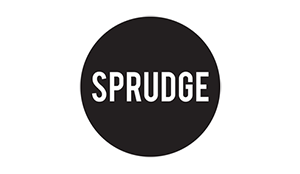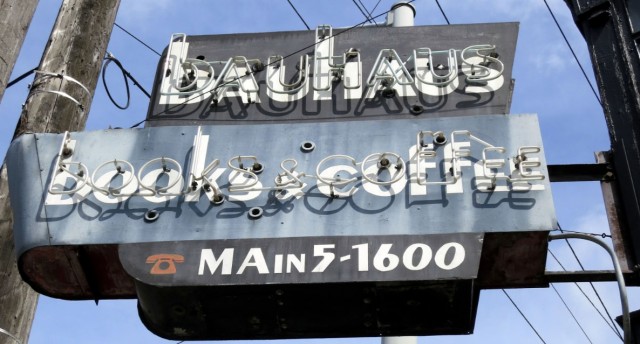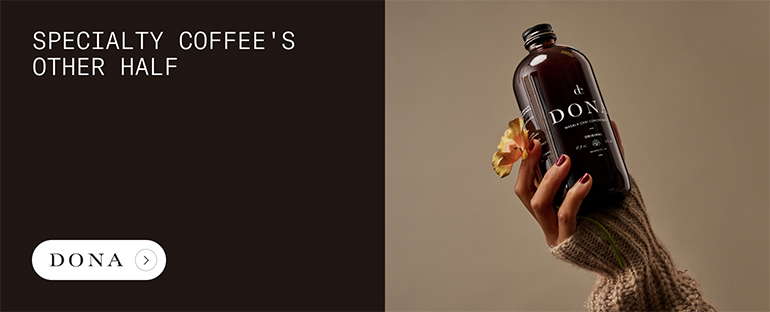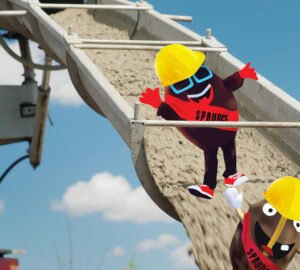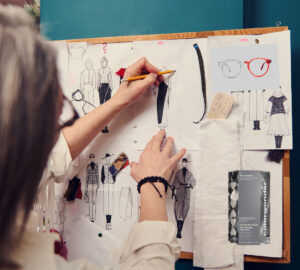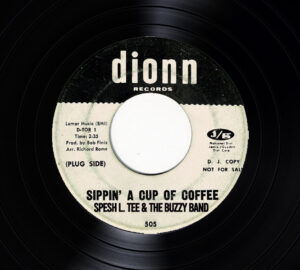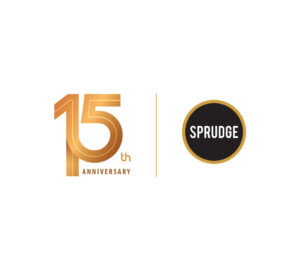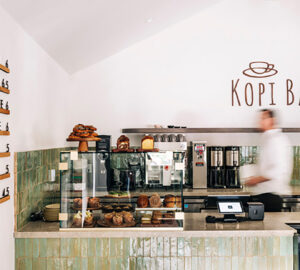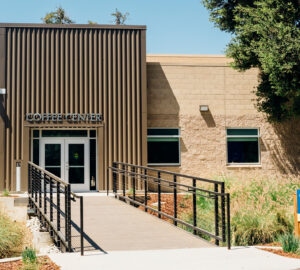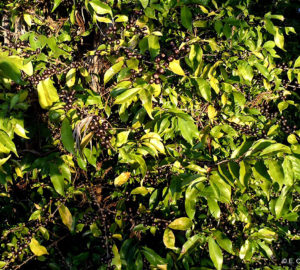The 300 block of Pine St in Seattle is about to be changed forever, having been purchased in early April by the Madison Development Group, whose specialty is mixed-use condos urban blandification. Anchoring the corner of this block is Bauhaus Books & Coffee, a seminal independent Seattle cafe with loads of history. Sprudge.com contributor Alex Bernson (@AlexBernson) feels that Bauhaus has had a greatly underrated impact on the contemporary conception of the specialty cafe, from aesthetics to service to social space. Like Mr. Bernson, we feel that losing, modifying beyond recognition, or otherwise blanding out the Bauhaus space will be a deep loss for the character of Seattle and the specialty coffee industry. Read on.
Seattle cafes, like the walking tours of patriotic Boston or a visit to a National Park lodge, offer a kind of living history of place and time. They are to be cherished, but also to be enjoyed, utilized, dirtied and cleaned; historic cafes are alive in the best possible sense. When you’re talking about Seattle’s historic cafes, there are so many to choose from, but to me, the big three are Cafe Allegro (opened in 1975), Espresso Vivace (in 1987) and Bauhaus, which opened in 1993. These each played a major role in the progressive elaboration of what it means to be an American independent cafe. They each have their strengths and fans, and while I spent my formative years mainly in Vivace, where I worked as a barista, I recognize Bauhaus’ incredible historical influence, and have been disheartened to follow the news that it is being threatened, first with closure, and now with extensive “retrofitting” and modification. This is, in some ways, a proper eulogy for what Bauhaus means right now, in its current state, an epitaph this cafe assuredly deserves.
Bauhaus’ most obvious significance is its aesthetic. It is the quintessential Northwest cafe—rustic industrial meets cozy 1950s Modern nostalgia in a beautiful, double-height corner space. It manages to feel warm, inviting, and communal all at once, even when the acres of windows are filled with oppressively gray Seattle skies. The component parts seem obvious now: warm, worn wood; steel and iron detailing; retro-modern, vaguely industrial fixtures and furniture; built-in glass display case under the register counter; ample and varied seating arrangements suited to a wide variety of social uses. But it was not always so obvious. Its design translated the aesthetic and social tropes of European cafes for American design and service sensibilities, with an effortless cohesion and appeal. These design concepts have become an indelible part of the standard approach to designing a specialty cafe in America.
Bauhaus’ strong functional and aesthetic choices became integral to the design language of the independent cafe—an influence explored in the gallery of images above. I strongly urge you to visit Bauhaus in its current form, before changes are made, and marvel at the fact that these design choices still stand after 20 years, with the only alteration being a ban on smoking in the upstairs library loft.
But Bauhaus’ cultural impact is as important as their design influence. Bauhaus, Espresso Vivace, and B&O Espresso were part of a vanguard of “alternative” culture that originated in Seattle, and made waves across the United States and the world. Tying these generational and social movements to coffee is logical and non-discursive, and one need only spend an afternoon whiling away the hours at Bauhaus to see why. In particular, Bauhaus’ corner location boasts ample seating and a highly transparent interface with the street, making it an extremely popular community spot for weekend hang-outs, rendezvouses for musicians and artists, gay cruising, and all myriad forms of urban socializing. This was as true in 1993 as it is today.
Bauhaus was co-founded by Joel Radin, Michael Klebeck, and Kris Von Oy. Michael and Joel’s other service collaborations, along with Mike’s brother Mark, did much to cement Bauhaus’ influence on the Northwest cafe. These collaborations included working with Bryan Yeck and Eric Hentz on Zeitgeist Coffee, the founding of Top Pot Donuts, as well as the three being involved in various configurations with other projects like Elliot Bay Cafe, and Sun Liquor. Michael Klebeck also went on to found Mod Pizza, a much more bland and corporate take on the same aesthetics. These businesses established the industrial-rustic meets retro-modern slick aesthetic as a defining force in the Northwest service landscape.
Despite its impact on the look and feel of the specialty cafes we create today, I feel it needs to be said: the coffee at Bauhaus has never been very good, and the stereotype of the snooty, aloof barista may owe a small part of its origin story to Bauhaus. I’ve heard it jokingly said that Bauhaus is where Vivace baristas go to retire—the tips are nearly as good, the quality standards and pace are more relaxed, and the regular clientele substantially overlaps. I mean no disrespect though. Bauhaus and Vivace are clear icons of cafe culture, and by extension, the history of a larger alternative culture in Seattle. It is a subtle but significant thing that a barista could maintain their strong relationships with regulars while “retiring” to a different cafe. These cafes are the fabric of their regular’s lives, with different reasons to visit each one often.
It is in some ways depressingly fitting that Bauhaus is being threatened. Bauhaus and the other cafes on the Hill helped “pioneer” the now classic cycle of gentrification that has happened in many American cities: white “artistic types” and LGBT folk move into a run-down center-city neighborhood, displacing minorities in the process; independent cafes, then bars and venues, then restaurants open to serve the newcomers’ tastes; the neighborhood becomes “cool” and a wider swath of young people move in; and one by one. the old buildings that gave the neighborhood its character get torn down or condo-fied or otherwise wrecked asunder.
Suddenly you turn around and everything is hideous. Mid-rise condos with terrible, raw street-level retail caverns full of exposed HVAC, featuring retail spaces that small, independent businesses can neither afford to lease nor build-out in. The result is a neighborhood without small businesses that can even begin to approach the beautiful style of Bauhaus.
So which is worse? Seattle letting a bunch of developers from Bellevue tear down a cultural landmark? Or allowing them to extensively modify said landmark, turning yet-another block of what was once that city’s cultural heart into something unrecognizably bland? Both options are a direct threat to the living history of American cafe culture, something the city of Seattle, with its supposedly progressive mayor, ought to know well enough to protect. If you want to help prevent this damage from being done, or if this article inspires you to make your voice heard, I encourage you to sign a petition dedicated to preserving Bauhaus. Like cafe culture itself, and the people who dwell and toil within them, this cafe matters.
Sources:
Capitol Hill Seattle Blog (extensive coverage)
SeaPort Magazine – background information on the Klebeck brothers, owners of Top Pot and Zeitgeist.
*This feature has been update on Monday, July 9th 2012 to reflect expanded information on the founding team behind Bauhaus.
